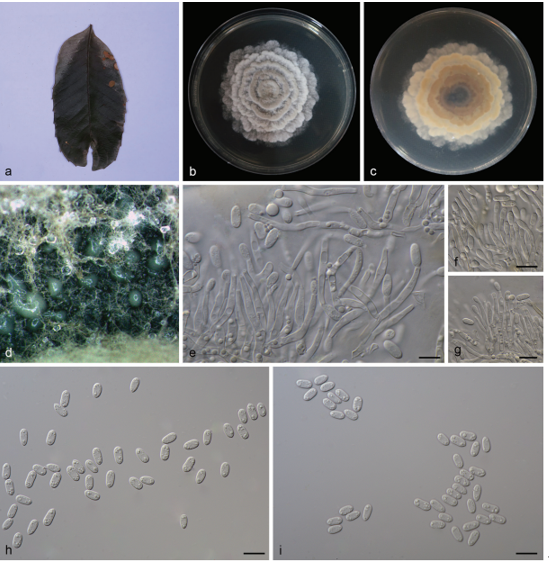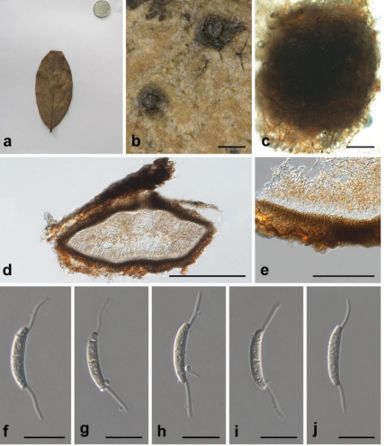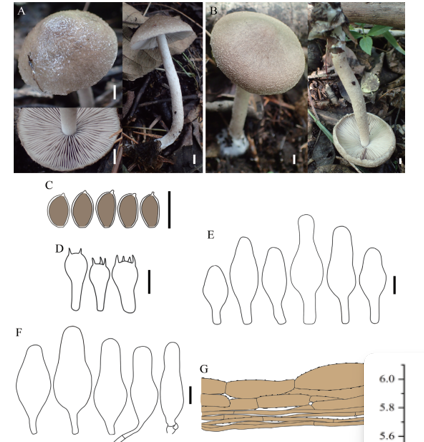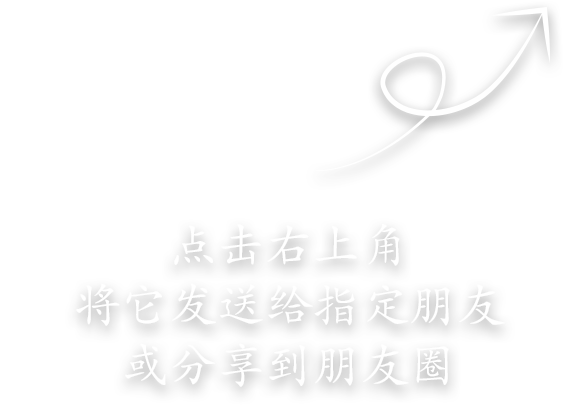Russula hakkae G.J. Li, H. A. Wen & R.L. Zhao, sp. nov. 2020
Index Fungorum number: IF551493; Facesoffungi number: FoF01048
Holotype: CHINA. Guangdong Province, Meizhou City, Meixian County, Longwen Township, 9 August 2013, XinHua Chen 34 (HMAS 267765).
Morphological description
Basidiomata small tolargesized.Pileus40–100 mm diam., first hemispheric, then flat hemispheric to applanate, planoconvex to convex when mature, smooth, viscid when wet, slightly glabrous when young, peeling 1/4–1/2 from the edge, sometimes desquamated in small patches; brightly tinged with Spectrum Red (I1), Peach Red (I5b) to Scarlet (I5), intermixed with pink tinge of Rose Doree (I3b) to Strawberry Pink (I5d) in center, Eosine Pink (I1d), Hermosa Pink (I1f) to Hydrangea Pink (XXVII5″f) towards margin. Lamellae adnate, equal, 2– 6 mm high, 17–22 pieces per cm at the edge, rarely forked near the stipe and pileal edge, often interveined, white when fresh, lamellulae absent. Stipe central to subcentral, 5–7×0.8– 2 cm, subcylindrical, slightly tapering towards the apex and base, smooth, sometimes rugulose longitudinally, mostly pinkish tinged with Eosine Pink (I1d) to La France Pink (I3f), partly longitudinally fade to White (LIII), a tinge of Pale Yellow–Orange (III15f) when injured, old and dry, first unchanging, spongy to hollow when mature. Context 2–5 mm thick from the lamellae attachment to the stipe, White, unchanging or becoming Sanford’s Brown (II11k) when injured, fragile, odour indistinct, taste acrid. Spore print White (Romagnesi Ia).
Habitat: in broad leaved forest dominated by Lithocarpus spp.
Distribution: China
GenBank Accession:
Notes: Russula hakkae can be easily distinguished from most of the other taxa of subsection Roseinae by its stabile pinkish tinge of stipe, acrid context taste, and very dense basidiospore ornamentation up to 1.2 μm. There are only a few members of subsection Roseinae which have pinkish tinged stipe. These taxa can be distinguished from R. guangxiensis as follows. Russula peckii Singer [as “undescribed species” in subsection Roseinae in Adamčík and Buyck (2012)] has a crenulate lamellar edge, a mild context taste, an ixotrichoderm pileus epicutis, and a habitat of coniferous forest (Peck 1907; Singer 1935). Russula pseudopeckii Fatto has a pileus edge with a few long lamellulae, a fruity to nondescript context odour, a cream spore print, and a basidiospore ornamentation composed of low warts (0.4–0.6 μm). Russula rubellipes Fatto has a mild context taste, a cream spore print, and some warts of basidiospore ornamentations forming a variable number of connectives (Fatto 1998).
Reference: Hiran A. Ariyawansa1,3 & Kevin D. Hyde1,2,3,15 & Subashini C. Jayasiri1,3 et al.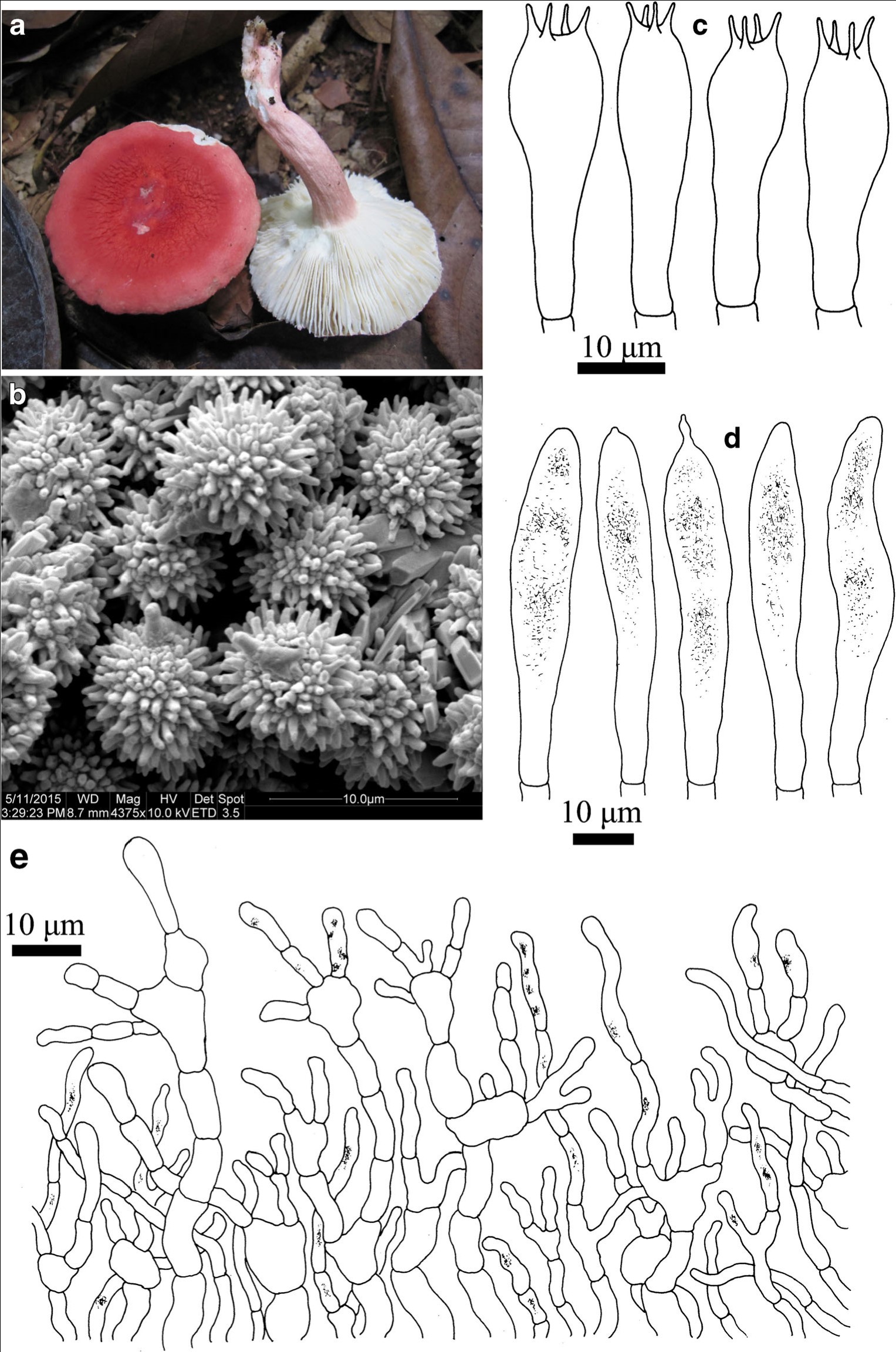
Russula hakkae (holotype) a Basidiocarps b Basidiospores c Basidia d Pleurocystidia e Pileipellis



